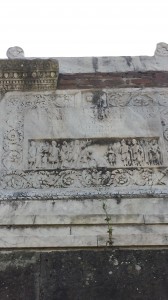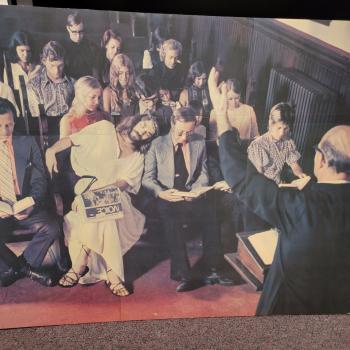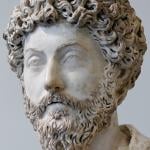There is so much more to see and take in at Pompeii than a few blog posts can relate. While the city seems likes a ghost town if you are there without the crush of tourists, it is still very much alive during the tourist season. Even in late Fall, Naples and environs can be warm. It was over 80F when Yuliya and I were there Oct. 23rd. I was wishing I had brought my shorts. And things were still growing. Here for example is a Pomegranate tree near the Villa of Mysteries
And of course there are palm trees and green grass (think Florida in late October).

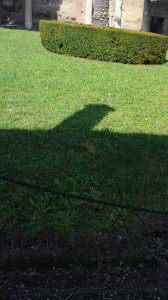
You can spend considerable time looking at the streets themselves with their cobblestones and ruts from all the wagons that rolled through them in antiquity

You can spend time reading the signs, if, that is, you know Latin and Roman numerals. I thank God all the time for the language training which I got from my public schools in High Point N.C. including three great years of Latin. It has served me well.
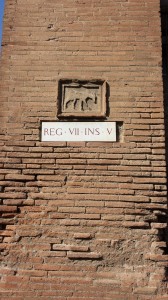 While roads and big streets in big towns tended to have names (Via Appia for example) smaller ones might just be assigned numbers. This sign tells us what region and which insula (apartment complex) we are in. The insula of the donkey…. in other words, blue collar worker, caravaners, who lived near the forum as they hauled goods for a living.
While roads and big streets in big towns tended to have names (Via Appia for example) smaller ones might just be assigned numbers. This sign tells us what region and which insula (apartment complex) we are in. The insula of the donkey…. in other words, blue collar worker, caravaners, who lived near the forum as they hauled goods for a living.
This is the sign at the laundry service shop. Togas in antiquity were cleaned by soaking them in ammonia, otherwise known as human urine. I’d stay away from that shop if you value your olfactory senses. Or below you can see a public sign on a column…
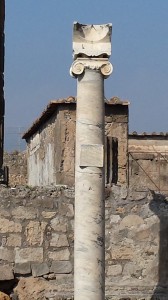
Clearly this is a more permanent, indeed marble sign… saying something like… ‘no loitering outside the court house’
Lots of signs of course were honorific in character. People would brag on themselves, their relatives, their patrons etc. In an honor and shame culture, honor had to be publicly established and displayed, otherwise peons wouldn’t know who they were supposed to be honoring. Here is one such sign…

A gentleman name Proculus and a friend have put this up, honoring Augustus, or perhaps a priest in the cult of Augustus there, and it appears from the last line Proculus did this in part to obtain the office of decurion. This is what you call public sucking up….
Public statues in a place like Pompeii tend to be of famous mythological characters, or patricians, or senators, or public figures. For example, here is a statue just off the main Augustan period forum…

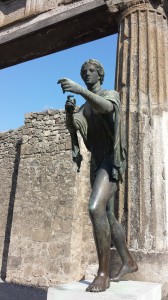
I enjoy spending time at the lock up… where they store the precious artifacts unearthed which they can’t leave out in public. For example here is a whole bunch of wine amphorae they have found.. mostly intact.
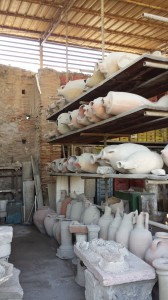
Or you can stop and stare at an incinerated wagon and an incinerated person lying on a slab.
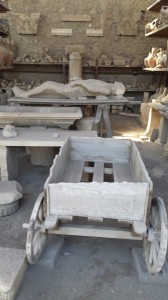
I enjoying checking out the public drinking troughs (for animals mostly) 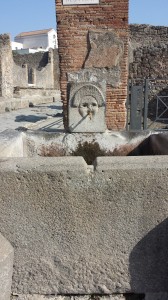
A trip through the necropolis is always educational as well. The wealthy enjoyed getting buried in style….
 Here as elsewhere in the Greco-Roman world tombs of the notable were perched right next to major roads, so you would notice them, maybe read the inscriptions, and be impressed. The honoring of the dead was big in that world.
Here as elsewhere in the Greco-Roman world tombs of the notable were perched right next to major roads, so you would notice them, maybe read the inscriptions, and be impressed. The honoring of the dead was big in that world.
